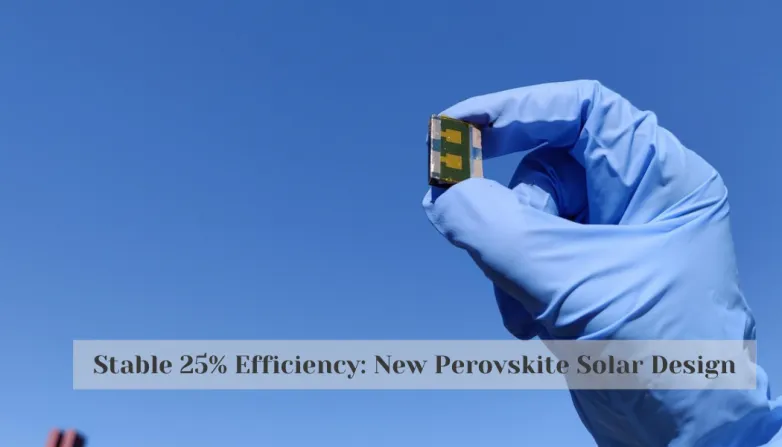Stable 25% Efficiency: New Perovskite Solar Design
- Groundbreaking design for perovskite solar cells boosts performance and stability, with 25.3% power-conversion efficiency measured in the lab and 95% of peak performance after 1000 hours of testing. Unlock the potential of PSCs for commercial applications!

Researchers at EPFL and Northwestern University have developed a groundbreaking design for perovskite solar cells (PSCs) which can help them reach a level of performance and stability required for commercialization. The new design introduces a special molecule, 3-mercaptopropionic acid (3-MPA) into the solar cells' self-assembled monolayer (SAM) to enhance the contact between the perovskite material and the solar cell's textured substrate, improving performance and stability. The device showed a lab-measured power-conversion efficiency of 25.3% and maintained 95% of its peak performance after 1000 hours of rigorous testing. This breakthrough design is a significant step forward in putting PSCs into the market, with potential applications beyond solar cells, such as LEDs and photodetectors.
What Breakthrough Design Improves Performance and Stability of Perovskite Solar Cells?
- 3-mercaptopropionic acid (3-MPA) is the special molecule which has been introduced to the solar cells' self-assembled monolayer (SAM) to enhance contact between the perovskite material and the solar cell's textured substrate.
- The device using this new design was able to achieve a lab-measured power-conversion efficiency of 25.3%, and maintained 95% of its peak performance after 1000 hours of rigorous testing.
- This breakthrough design has the potential to usher in the commercialization of perovskite solar cells, with applications beyond solar cells, such as LEDs and photodetectors.
- The design adds a new layer of complexity to creating a PSC, but it could be the key to unlocking the efficiency and reliability of these solar cells.
- This design is the result of collaboration between researchers at EPFL and Northwestern University, and is expected to be further developed to commercialize PSCs.
Also read

